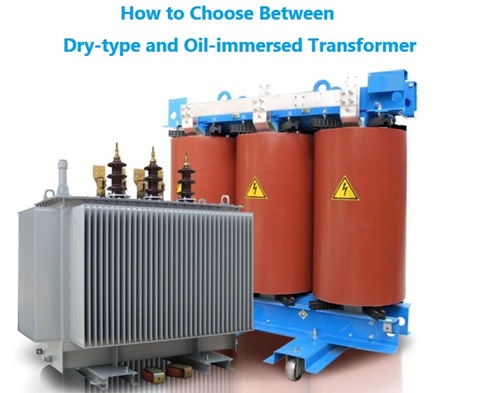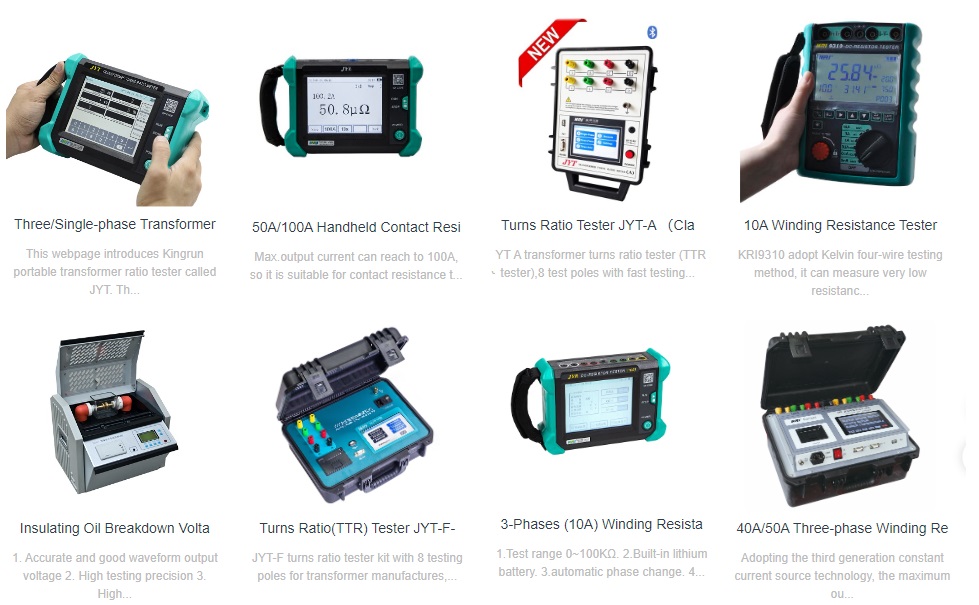Transformers are common and useful devices that take high-voltage electricity directly from power stations and convert it to lower voltages, there are two types of transformers currently used in industry: dry-type transformers and oil-immersed transformers. The dry type uses air as the cooling medium, and the liquid cooling uses oil. While the end result is the same for both types, there are a number of notable differences between them that will affect which type you choose.

Dry-type transformers (referred to as "dry transformers") and oil-immersed transformers (referred to as "oil transformers") are widely used in power engineering. They differ in terms of external enclosure, lead configuration, voltage capacity, and other aspects. Detailed analysis is as follows:
1. External Enclosure:
Dry-Type Transformers: The iron core and windings of dry transformers are directly visible, and silicone rubber bushings are commonly used.
Oil-Immersed Transformers: Oil transformers have an outer casing, with the windings immersed in insulating oil, and typically use porcelain bushings.
2. Lead Configuration:
Dry-Type Transformers: Predominantly use silicone rubber bushings.
Oil-Immersed Transformers: Mostly equipped with porcelain bushings.
3. Voltage Capacity:
Dry-Type Transformers: Primarily used for distribution purposes, with capacities generally below 2000 kVA and voltage ratings up to 10 kV.
Oil-Immersed Transformers: Can be designed for all capacities and voltage levels.
Voltage Capability: Dry-type transformers are designed to handle small to medium MVAs and voltage ratings, making them ideal for small applications. Oil-cooled transformers can handle heavier loads, so applications requiring higher voltages will require oil units.
4. Insulation and Cooling:
Dry-Type Transformers: Utilize resin insulation, rely on natural air cooling, and employ fans for cooling in larger capacities.
Oil-Immersed Transformers: Rely on insulating oil for both insulation and cooling, with heat dissipated via oil circulation to radiators.
5. Applications:
Dry-Type Transformers: Commonly used in environments requiring "fireproofing and explosion-proofing," such as large and high-rise buildings.
Oil-Immersed Transformers: Typically used outdoors, often with provisions for "oil spill containment pits."
6. Load Capacity:
Dry-Type Transformers: Operate within rated capacity.
Oil-Immersed Transformers: Exhibit better overload capacity.
7. Cost:
(initial and operating): Dry has significantly higher operating losses compared to oil cooling. Oil-immersed transformers have a higher standard energy efficiency and therefore have a higher service life than dry-type transformers.
8.Maintenance:
Oil-cooled transformers require more maintenance procedures and must be performed more frequently than dry-type transformers. Oil needs to be sampled to test for contamination, and dry-type transformers are very resistant to chemical contamination.
9.Noise:
The operating sound level of oil-cooled transformers is lower, so the noise pollution is less than that of dry-type transformers.
10.Recyclability:
Dry end-of-life recycling is limited, while oil units have easier core/coil recycling. Oil-cooled with superior longevity and maintainability, producing less waste and requiring less replacement and labor.
11.Efficiency:
Dry-type transformers are larger units with limited voltage and size, making them more prone to overheating if they experience overload. As a result, they have higher electrical losses and are more expensive to maintain dry power over time. Oil-cooled units are smaller and more efficient. They require less demand and create a smaller environmental footprint.
12.Location:
The location of the transformer will be the biggest determinant of which type you need. Dry are designated for use in and near buildings simply because they are safer for the environment. Dry-type transformers are non-flammable and have less fire risk, making them ideal for shopping malls, hospitals, residential areas and other commercial areas. Oil-cooled transformers are used for outdoor installations because of the potential risk of fire due to oil leaks and spills, but these installations are more environmentally friendly.
Conclusion:
Dry-type transformers are advantageous in terms of environmental friendliness, safety, and ease of maintenance, though they are costlier. Oil-immersed transformers excel in cooling performance and electrical strength due to their insulating oil, are cost-effective to manufacture, but require regular maintenance and pose a fire hazard.
Considering these variables, Oil-immersed transformers appear to be the better option overall, with higher energy efficiency, recyclability, lower noise pollution, lower operating costs and a smaller environmental footprint. However, the Oil-immersed transformers cannot be used in any situation at all. Dry are the best choice for commercial and indoor operations and are many times required because they are safer units to operate around people and areas that may present a fire hazard. Users should consider application scenarios, safety, environmental concerns, and cost when selecting the appropriate transformer type.
Recommendations:
For environments with stringent safety or space requirements, dry-type transformers are preferable.
For applications requiring superior cooling performance and with sufficient space, oil-immersed transformers are recommended.
Always consult a professional power engineer for the most suitable solution.
Kingrun Transformer Instrument Co.,Ltd.


More Transformer Testers from Kingrun
